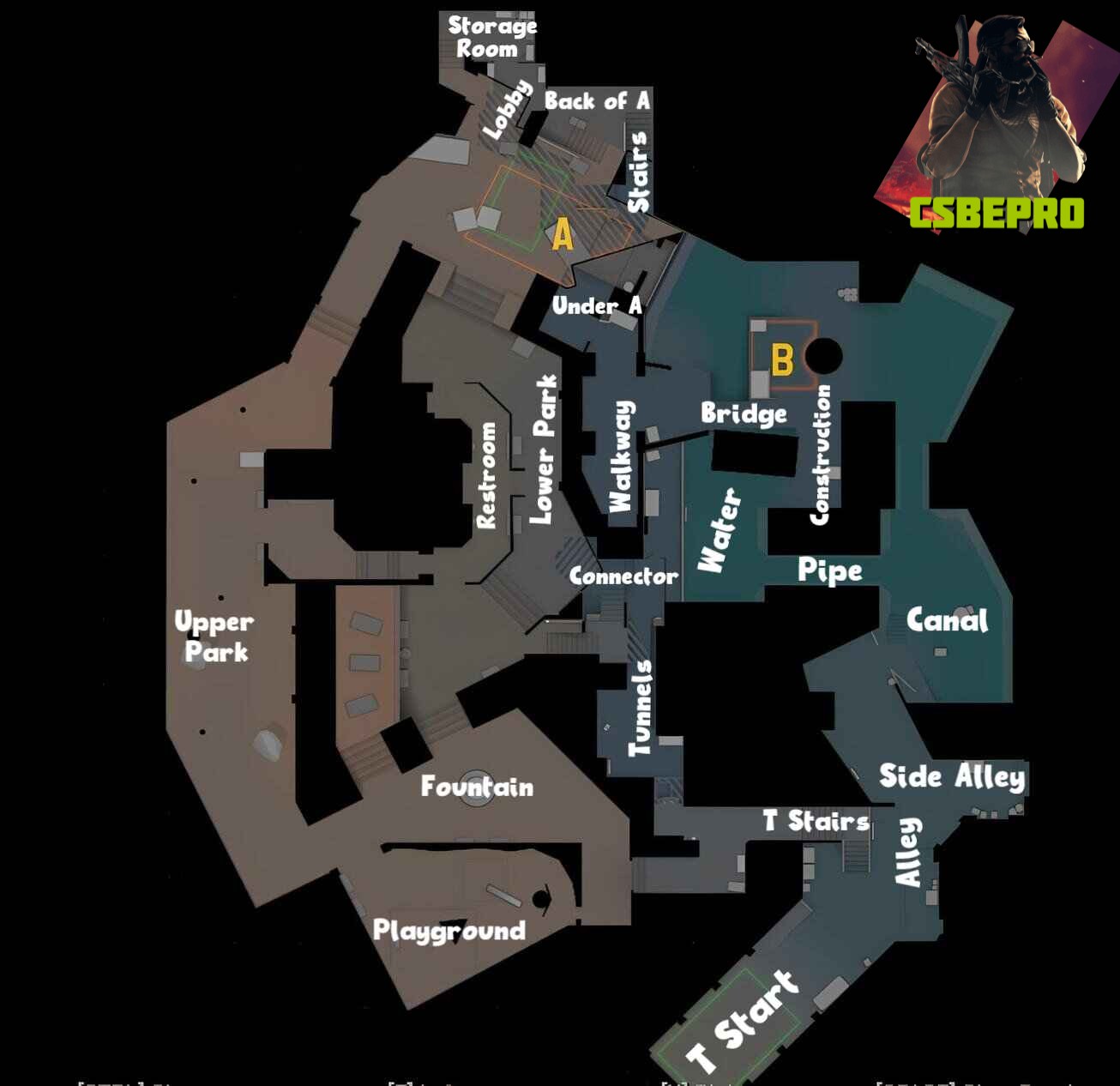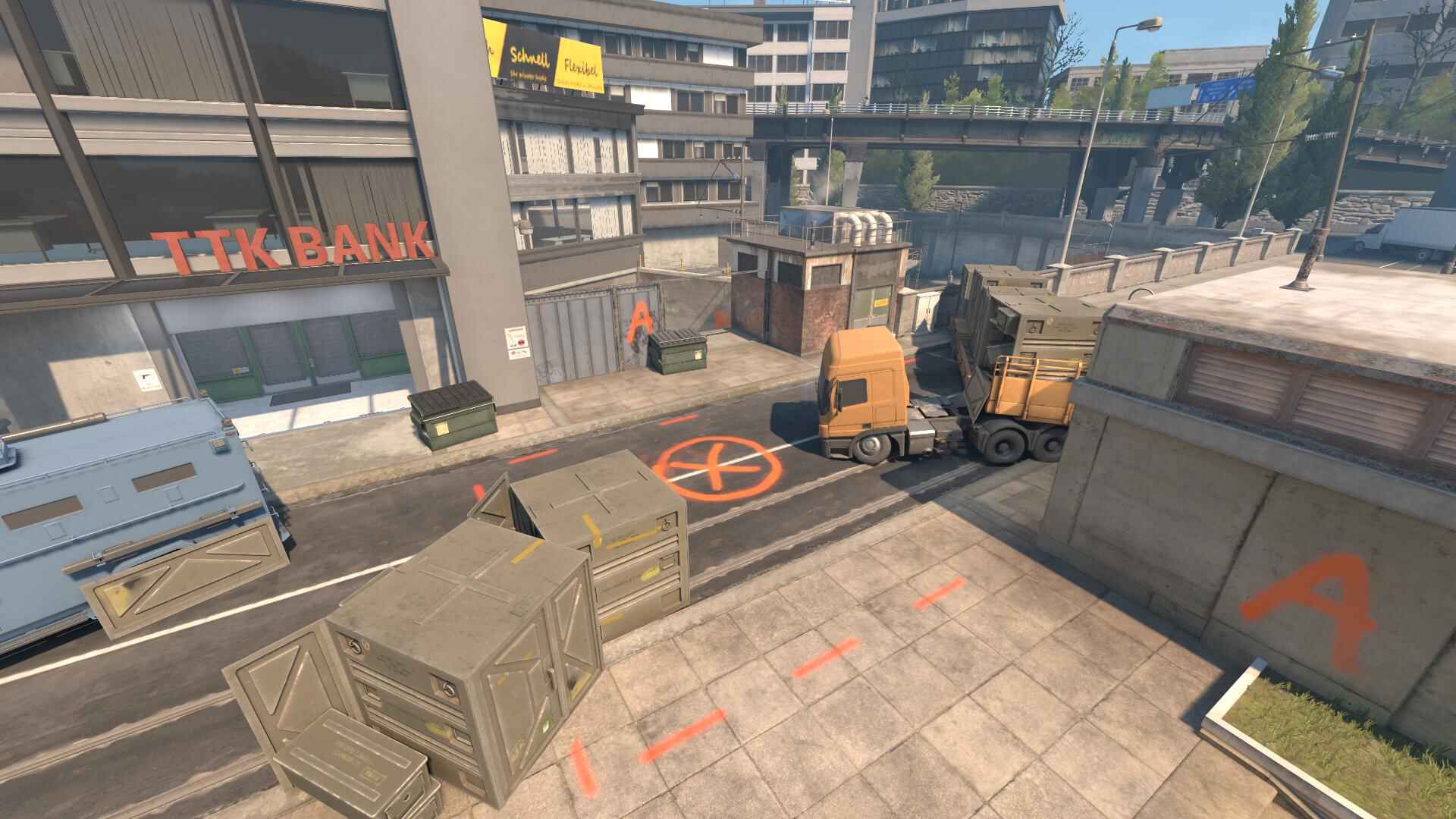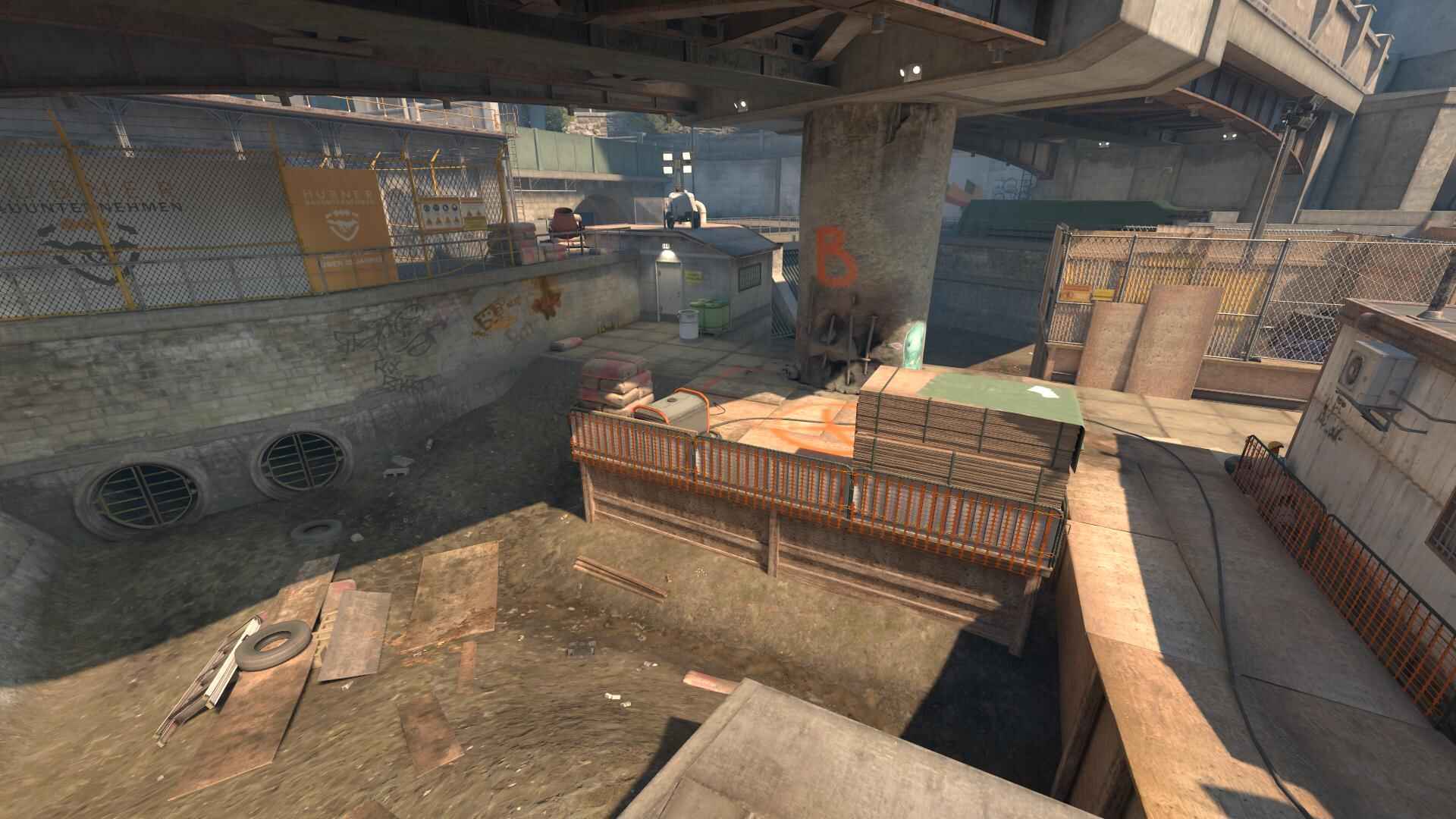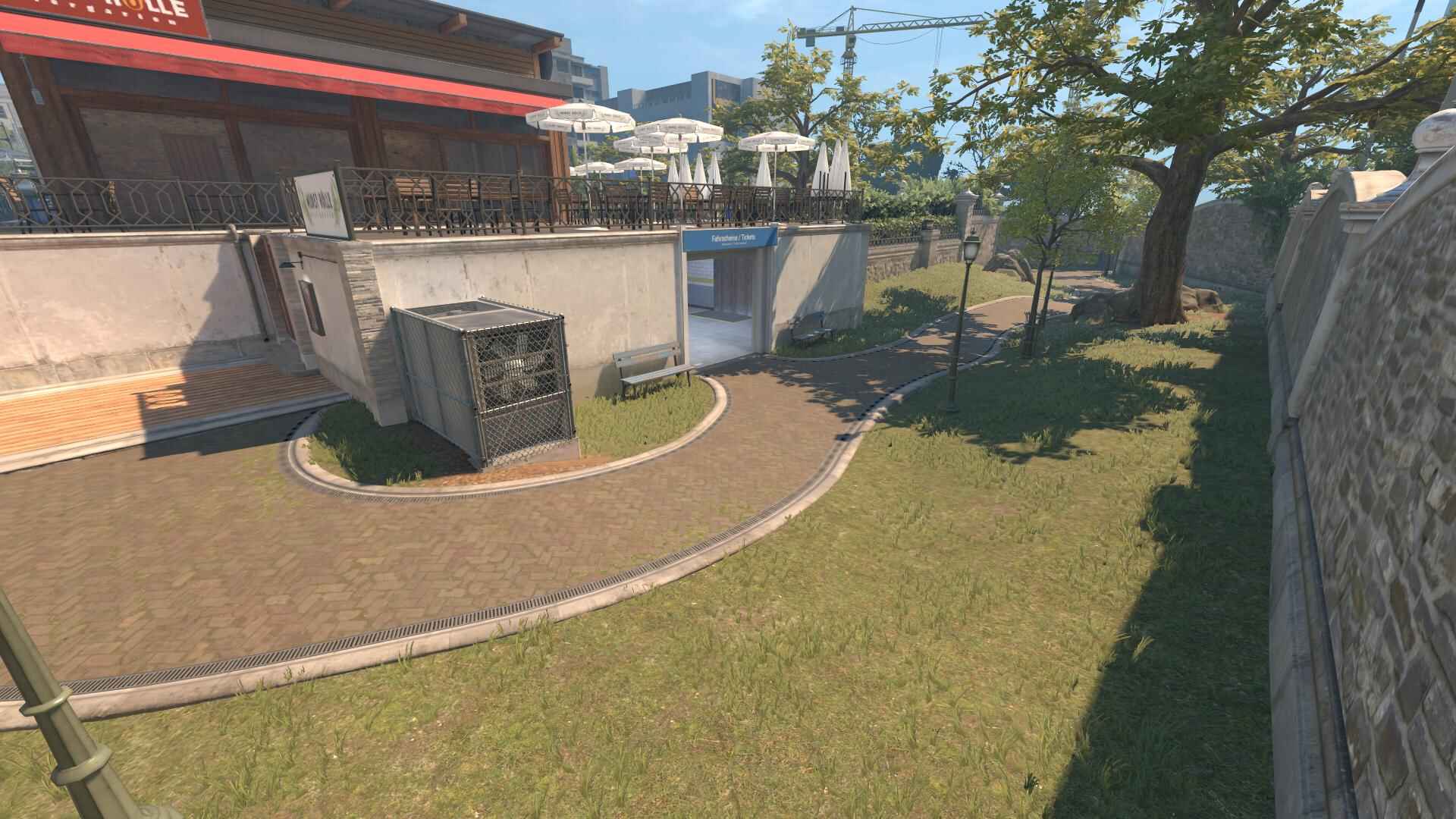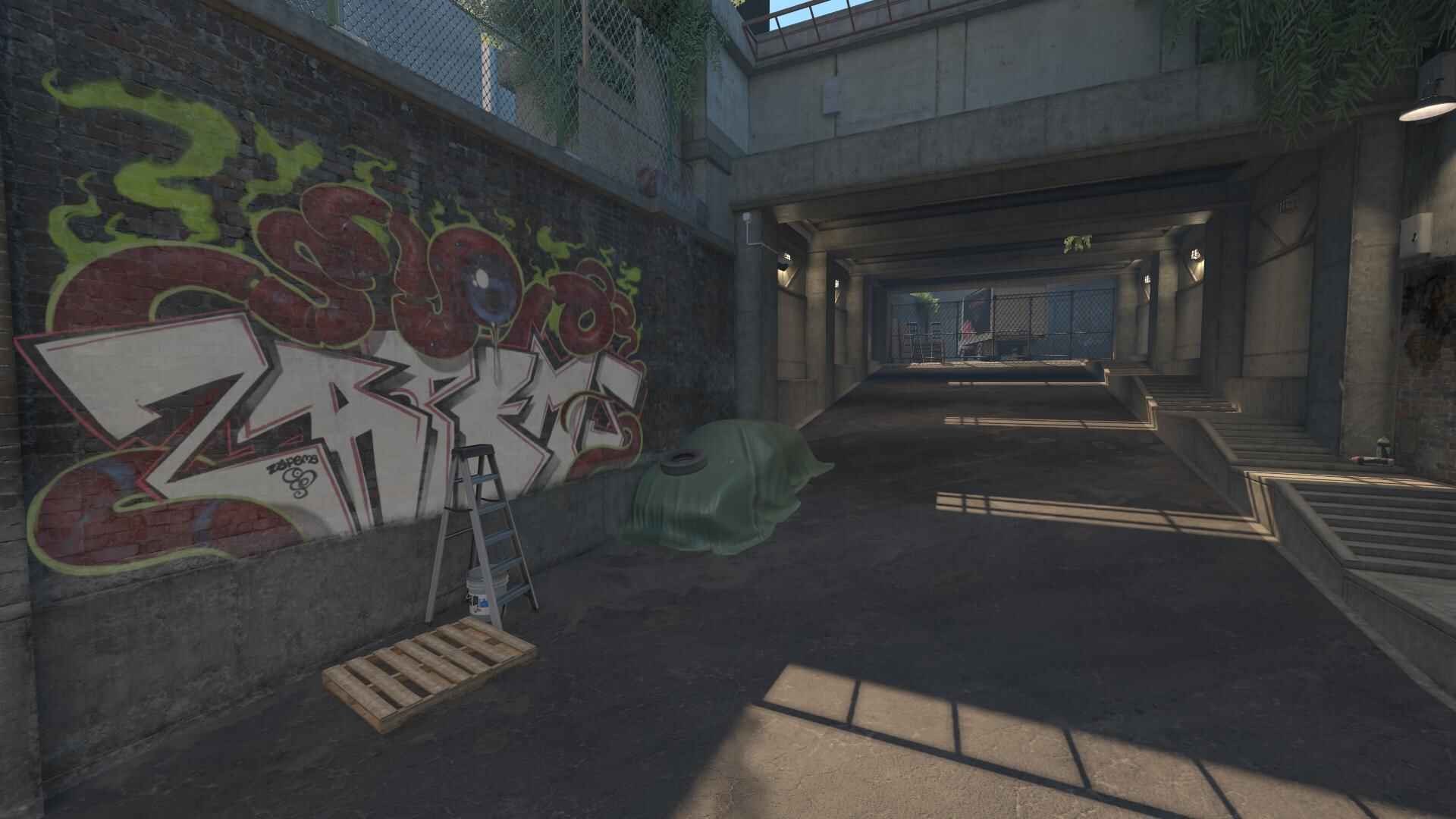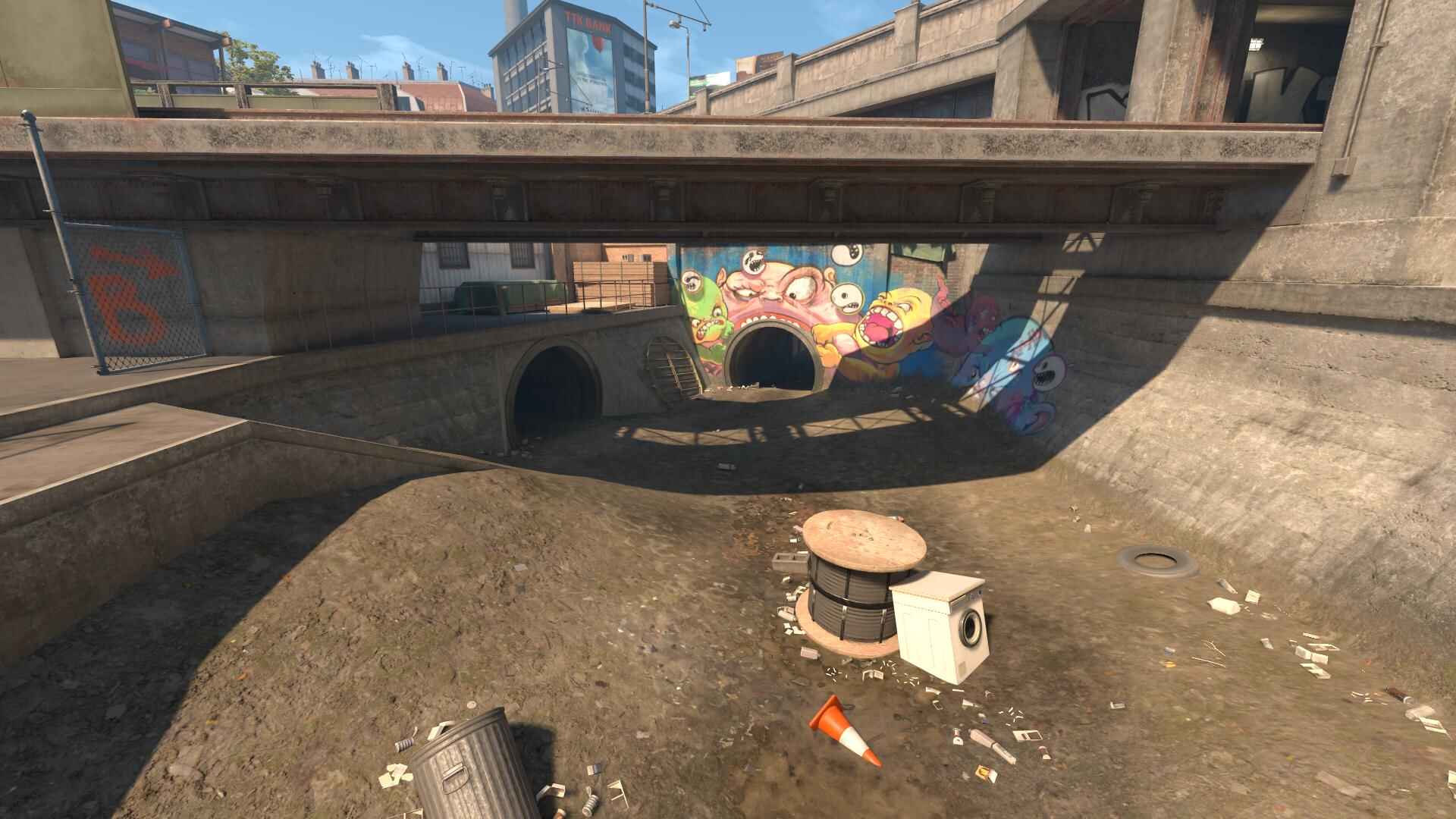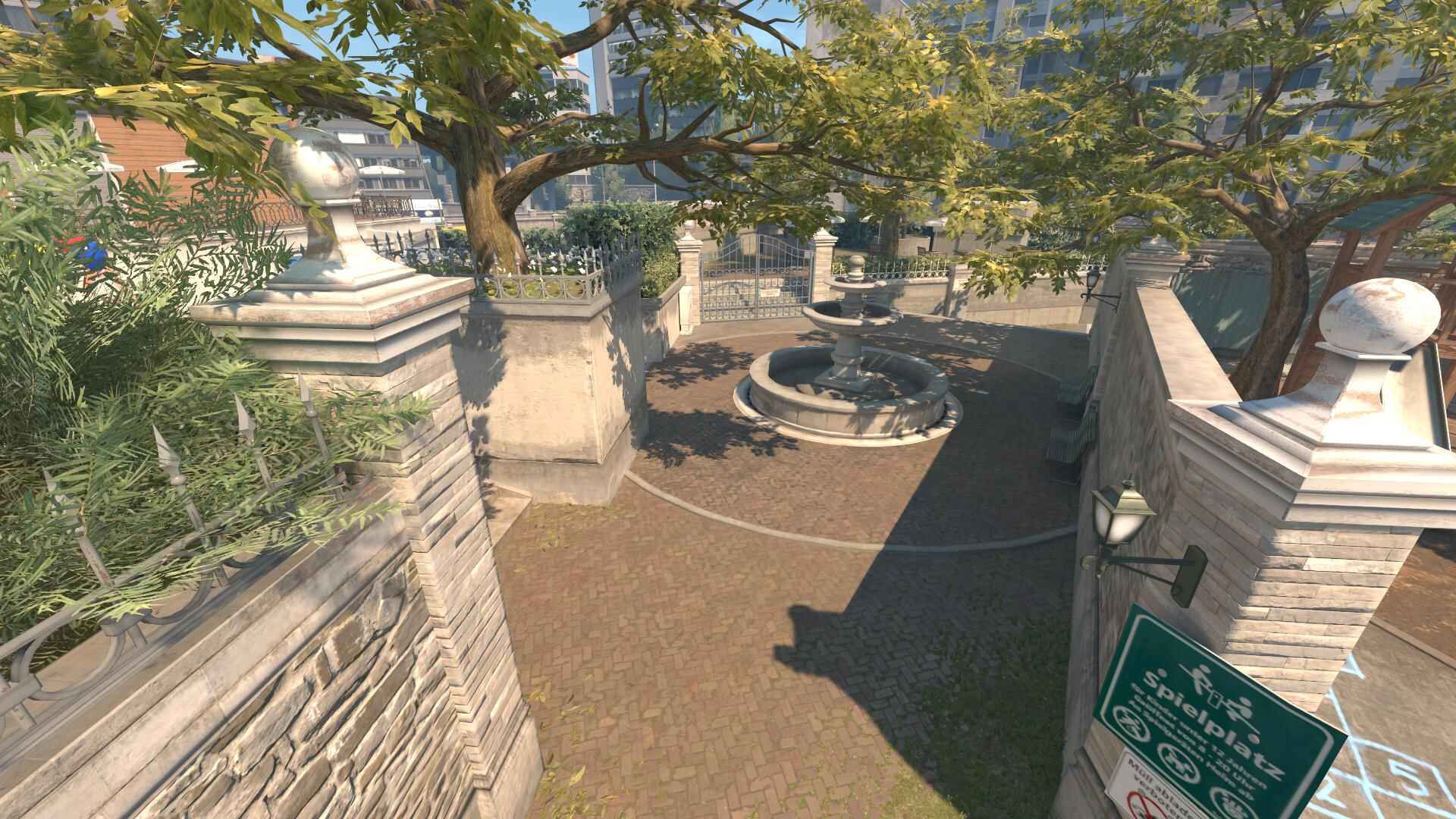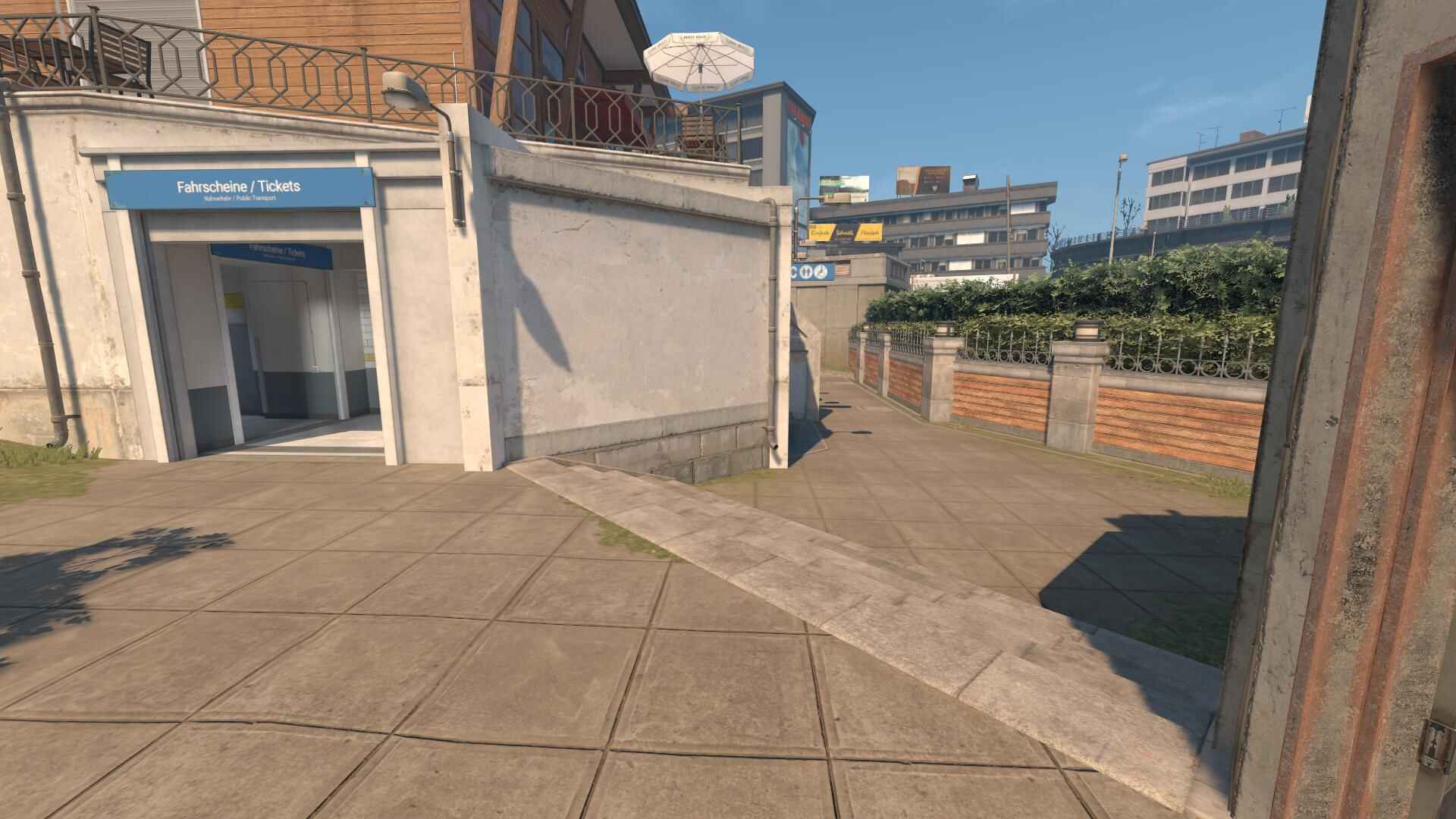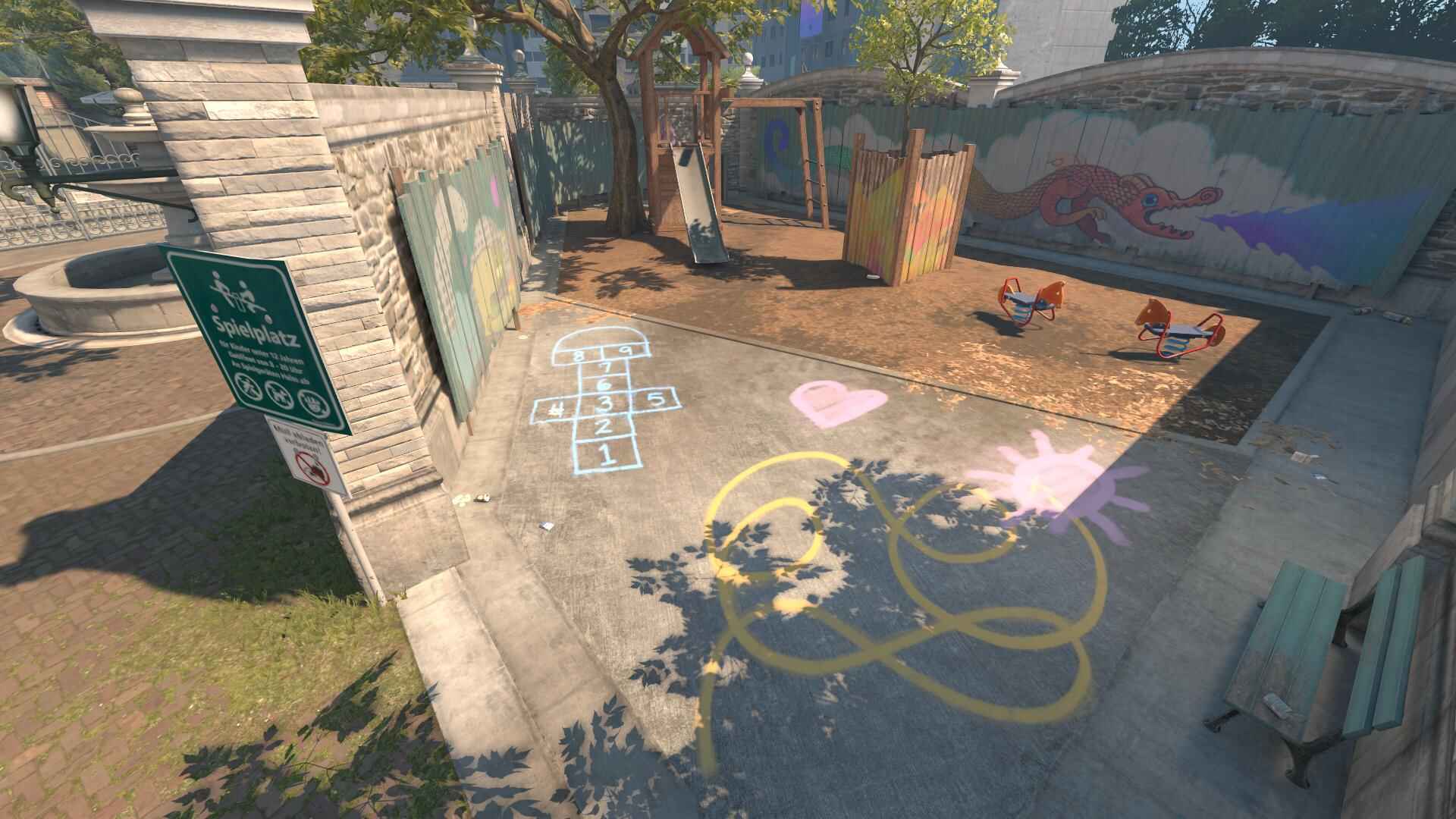Home » Counter-Strike 2 » OVERPASS
09/11
OVERPASS
Introduction
Overpass is one of the most dynamic and complex maps in Counter-Strike 2. It stands out for its vertical layout, opportunities for long-range battles, and the unique way its bomb sites are designed. This guide breaks down everything you need to know about Overpass from key locations and map callouts to tactical tips, so you can play smarter and win more rounds.
Overview
Overpass has two bomb sites, A and B, connected through a mix of open spaces, tight tunnels, and winding pathways. The map blends wide sightlines with areas perfect for close combat, which means controlling key parts of the map is crucial for both teams.
As Terrorists, you have a few strong approaches. You can push aggressively through Connector and Water to go for B, or take your time and work through Fountain and Restrooms to hit A. Both bomb sites are quite open, so using your utility well-especially smokes and flashes – is key to a successful execute.
For Counter-Terrorists, it’s all about controlling choke points and staying mobile. You’ll need to be ready to rotate quickly and hold important spots.
About
- Map Type: Bomb-defusal
- Faction Terrorist: Phoenix Connexion, Eastern Europe
- Faction Counter-Terrorist: SAS (Special Air Service), UK
- Location: Germany
- Release Year: 2000
- Map code: de_overpass
Logo
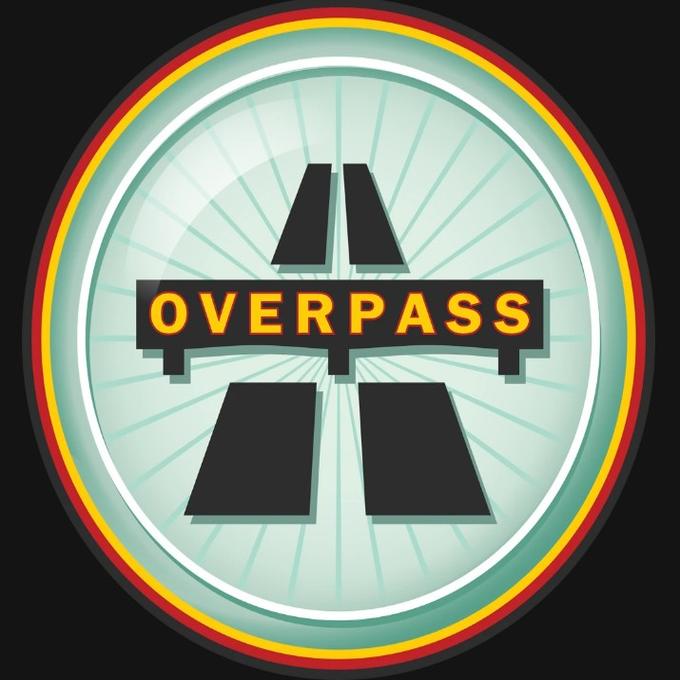
Overpass Map Callouts
T Start – Where the Terrorists spawn at the beginning of each round
Alley – Leads out from T Start into the main areas of the map
T Stairs – A staircase near T Start that leads toward mid
Side Alley – An alternate route near the canal heading toward B
Tunnels – Underground path from near T Stairs to mid
Connector – A critical area linking parts of the map; leads to Lower Park and Walkway
Walkway – Can take you toward either A or B site
A Site – One of the bomb planting zones, labeled “A”
Under A – The lower level beneath A Site
Stairs – Leads from the lower map levels up to A Site
Back of A – Behind A Site; often used for defending
Lobby – Near Storage Room, usually used when moving toward A
Storage Room – Small room near Lobby, good for holding angles
B Site – The second bomb plant zone, labeled “B”
Bridge – Connects B Site to other parts of the map
Water – Lower area near B that offers movement options
Pipe – Pathway leading into B
Construction – Common defensive spot near B
Canal – Lower map route leading to B
Fountain – Central area near Playground
Playground – Far-left area where Ts can push early
Upper Park – Elevated ground near Playground
Restroom – Narrow hall connecting Park to A Site
Lower Park – Lower ground area close to the Restrooms
Tactical Strategies
Terrorist Side
On the T side, you’ve got several good strategies depending on how aggressive or cautious you want to be. If you’re aiming for A, try gaining control of Fountain and Connector early so you can move into Park more safely. When going for B, fast pushes through Canal and Water can catch the CTs off guard. Rushing B can be very effective if timed right, but taking it slow helps you clear out aggressive defenders and forces them to rotate early.
Counter-Terrorist Side
On A, you want to hold Long with a rifle or an AWP, and make sure someone’s covering Short. If you’re holding B, one player should be at B Hole while another stays inside site to create a strong crossfire. For Mid control, use your grenades smartly to block vision and delay or stop pushes through mid toward B.
Tips
CTs should focus on holding map control and setting up solid defensive positions. On A, it’s common to see CTs holding from Bank (near Lobby) and Restroom to deny middle and long access. Pushing into Fountain or Playground early can give you useful info or even disrupt a T side push.
At B, you need eyes on Tunnel and Water. Being able to rotate fast is huge, and Connector plays a big role in moving between sites quickly. Don’t forget how valuable your grenades are well-placed smokes and incendiaries can really slow down an attack. Use unexpected angles and crossfires to surprise enemies, and always communicate with your teammates to stay ahead of the other team’s plays.
Conclusion
Overpass is one of the most unique and strategic maps in Counter-Strike 2. If you want to perform well, knowing the callouts, using your utility properly, and understanding both team strategies makes a big difference.
Want to sharpen your skills even further? Don’t stop here – check out other classic and competitive maps like Ancient, Anubis, Dust 2, Inferno, Italy, Mirage, Nuke, Office, Train and Vertigo. Each has its own twists, tactics, and secrets waiting to be mastered.
